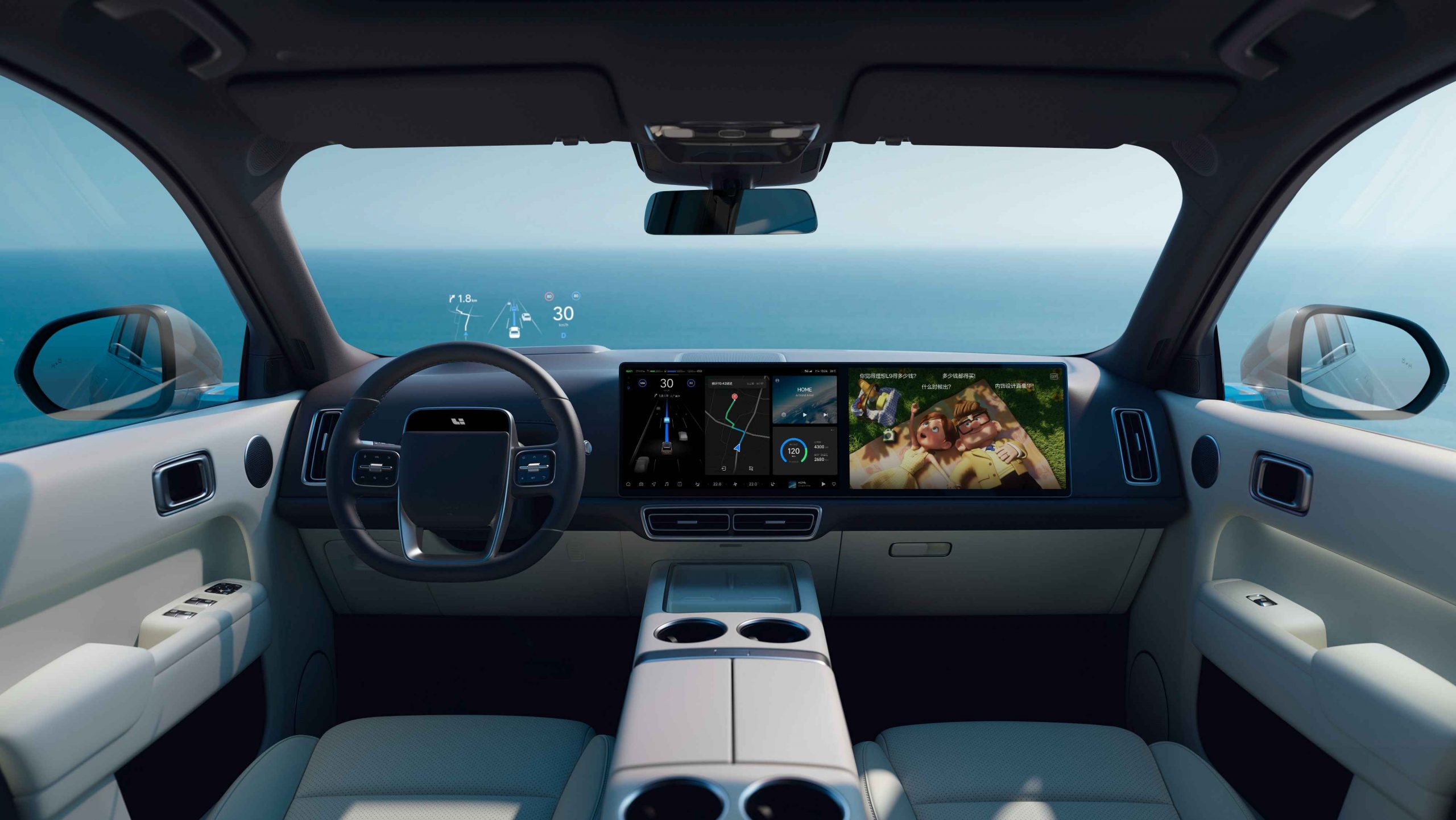Today at noon, the official Weibo account of Li Auto released the first official pictures of the Li ONE Power (L9). One image shows a panoramic view of the front row, and the other shows the back seat. These two pictures reveal many details about Li Auto’s innovations in the cabin, and we will examine them one by one.
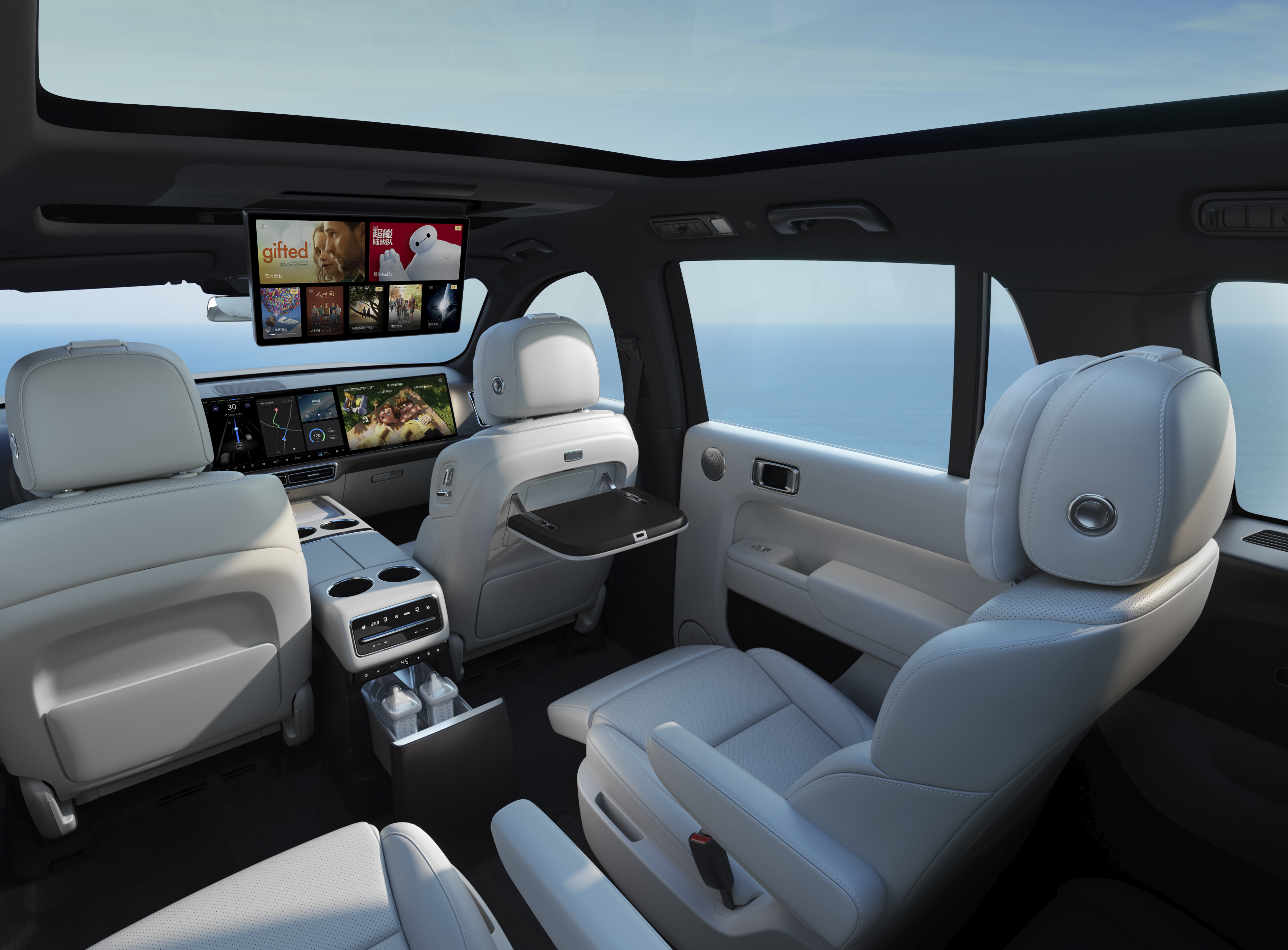
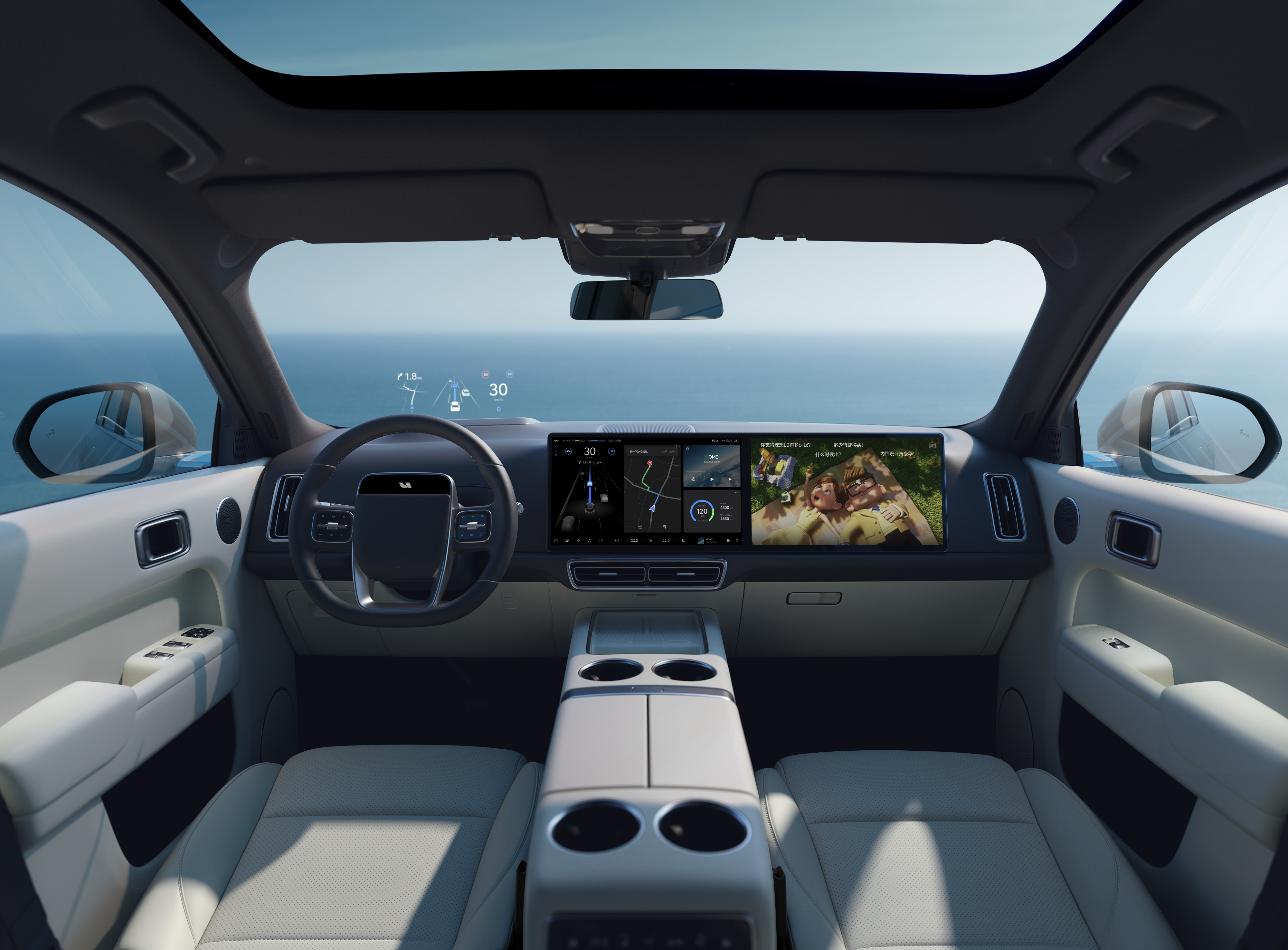
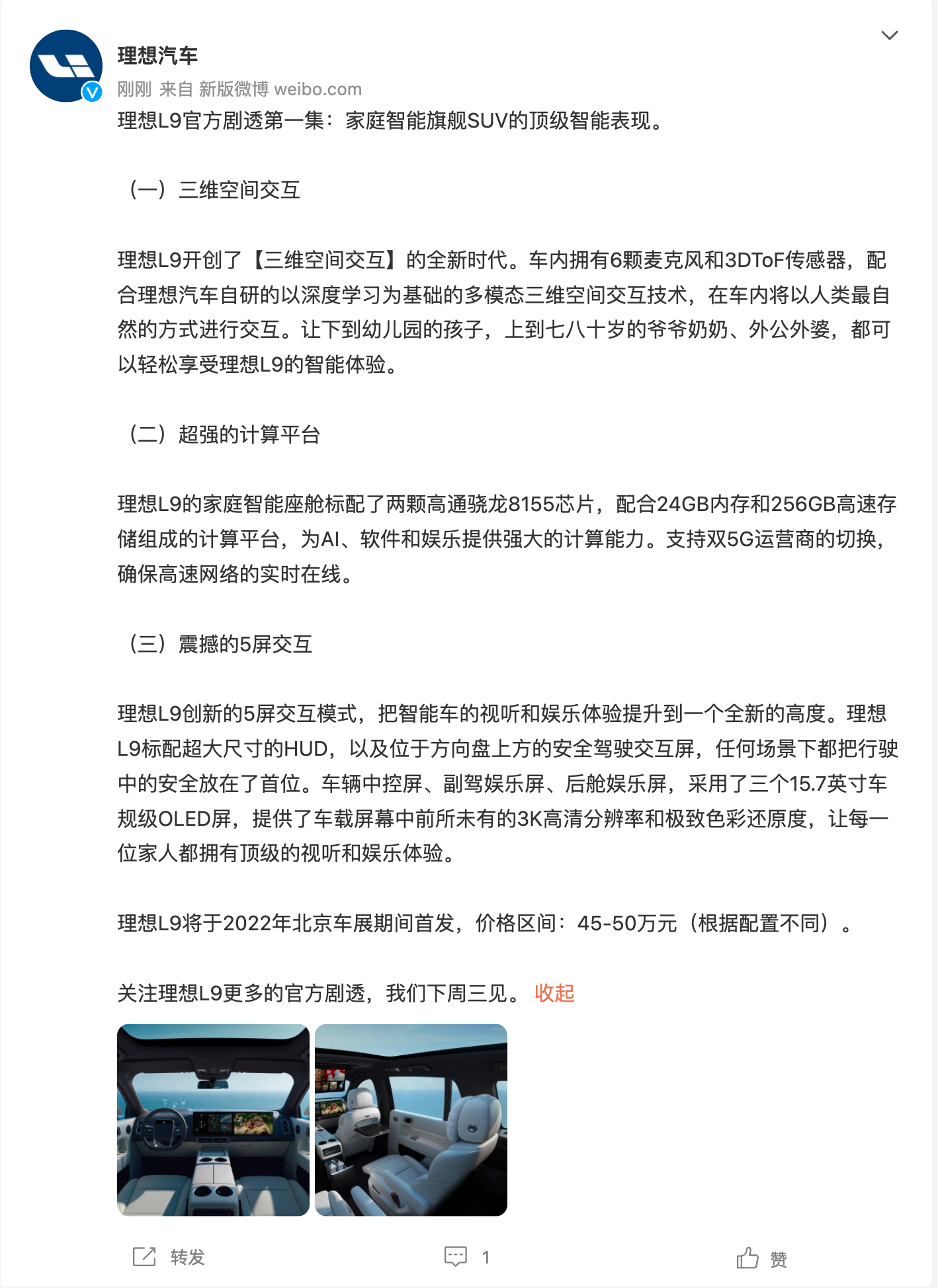
5-Screen Interactivity
This time Li Auto has announced the use of a 5-screen interactive design on the Li ONE Power. These screens are:
- Heads-up display (HUD)
- A Touch Bar-like screen on the steering wheel (with touch control)
- Central screen
- Front passenger screen
- Rear entertainment screen
The last three screens are all 15.7-inch OLED screens with a resolution of up to 3K.
To support the 5-screen interaction, the Li ONE Power is equipped with two Snapdragon 8155 chips, and comes with 24 GB of memory and 256 GB of storage space, as well as support for dual 5G network operator switching.
The car is also equipped with six microphones and a 3D ToF sensor.
There is no doubt that the six microphones will be used to create 6 sound zones for voice recognition, improving the riding experience of passengers in the back row and enhancing the interactive feeling of the vehicle.
As for the 3D ToF sensor, online explanations suggest that ToF stands for “Time of Flight,” also known as “flight time” 3D imaging. This imaging technology emits continuous pulses of infrared light of specific wavelengths to a target, and receives light signals returned by the object to be measured through a specific sensor. It calculates the flight time or phase difference of the light to obtain 3D depth information of the object to be measured.
Therefore, it is expected that the Li ONE Power will be able to realize body interaction or gesture recognition, but Li Xiang himself has criticized gesture control in the past, so we speculate that it will be combined with VR in the future.
Now let’s take a closer look at these 5 screens.
HUD
First of all, the highly anticipated heads-up display (HUD) finally arrives on the Li ONE Power as scheduled, with a wealth of displayed information, including:
- Navigation information
- Assisted driving visualization information
- Vehicle speed information
- Gear information
- Speed limit information.
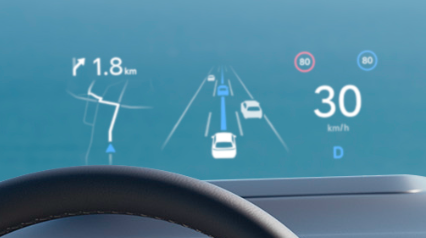 These pieces of information meet most of the demands during the driving process. Though the official size of the HUD was not disclosed, from the richness of information and the size of the projection device, it is believed that the area of the HUD is similar to that of the Mercedes-Benz S-Class.
These pieces of information meet most of the demands during the driving process. Though the official size of the HUD was not disclosed, from the richness of information and the size of the projection device, it is believed that the area of the HUD is similar to that of the Mercedes-Benz S-Class.
However, we have doubts about whether an overly abundant HUD display would affect driving. We question whether visualizing the information directly onto the HUD would improve the effect compared to instrument display.
In addition, the brightness of the HUD also needs further verification.
Touch Bar on the steering wheel (safe driving interaction screen)
The official function and name of the screen on the steering wheel has not been revealed yet, so we name it Touch Bar and speculate about its functions.
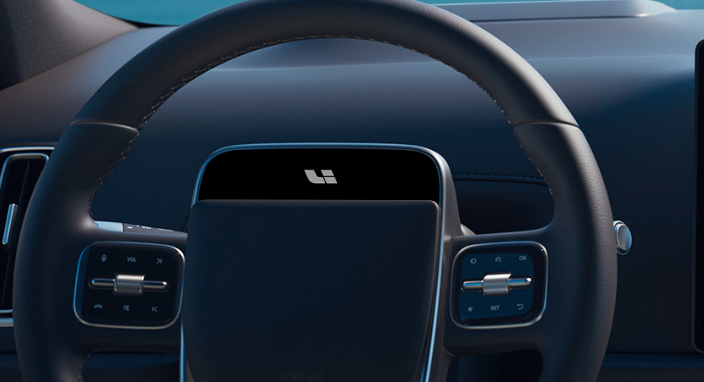
Lingyi L9 has canceled the dashboard, with some information displayed on the HUD while others integrated into the central control screen. From the perspective of information, HUD and the central control screen can already meet the interaction requirements of the dashboard information, so the use of this screen is still a question mark.
According to our understanding, this screen supports touch operation, and Lingyi L9 also cancels the original car control screen, so this screen should be equipped with some convenient operation functions, enabling the driver to operate other vehicle settings without moving away from the steering wheel. Smart recommendations based on the scenario can also be provided.
For example, after getting on the car, the function button can immediately enter the navigation or music mode; when the auxiliary driving is turned on, some choices regarding auxiliary driving can be provided.
However, the disadvantage of the screen is that it is fixed on the steering wheel, making it difficult to provide very convenient operation during daily driving. From the first use of Touch Bar on the Apple MacBook Pro 16 to the cancellation of Touch Bar on the 21st version of MacBook Pro, we wonder whether Lingyi can find a valuable usage scenario for this feature in cars.
Central control screen
First of all, Lingyi L9’s central control screen integrates the dashboard information, and the UI design is very similar to that of the Tesla Model 3. The reading convenience of instrument information is not as good as that of the traditional instrument position, which may make many car owners feel uncomfortable when using it for the first time. Fortunately, the HUD has already carried part of the dashboard functions.
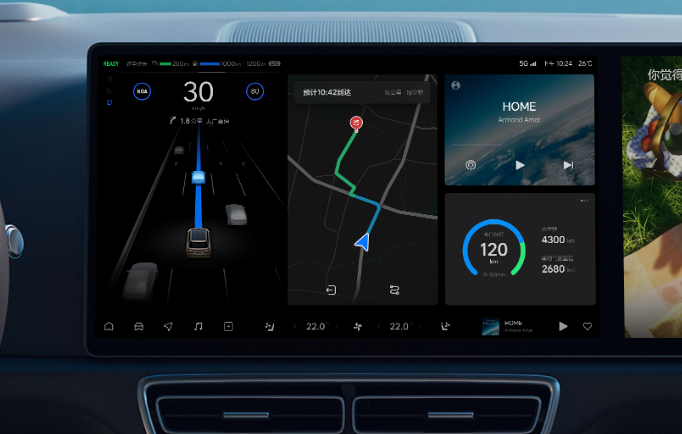
In my opinion, it is a trend for HUD and the central control screen to replace the dashboard in the future.
With the digitization of the dashboard, two trends have emerged in the market:
One traditional approach of automotive companies is to simply display the original pointers onto the screen without much modification, which lacks practical value.
Another approach is taken by emerging automotive companies, which integrate information from assisted driving. However, as the amount of information that needs to be integrated into the dashboard increases, the dashboard’s size increases as well. It is difficult to enlarge the dashboard while also ensuring that it does not conflict with the size of the steering wheel. The small size of the instrument panel in the P5 model of Xpeng is a poor example of this, as no matter how the steering wheel is adjusted, the full display cannot be seen. In contrast, the ET7 model of Nio designs an elongated dashboard to reduce potential conflicts with the steering wheel.
Returning to the center console screen, the UI design is highly similar to that of Tesla, with the car speed on the left side and visual driver assistance information, a docking bar on the bottom for easy operation, and a functional area on the right side with a top status display.
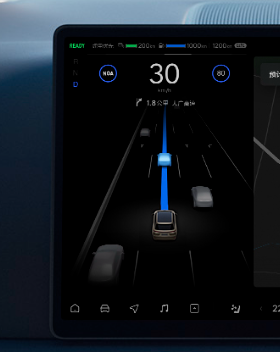

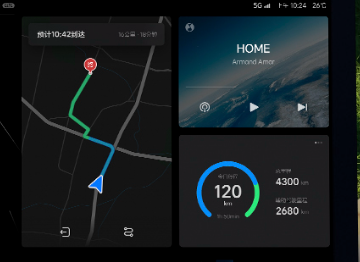

However, the ideal design does not include navigation as a desktop display; we hope that navigation can become the default desktop icon through OTA updates in the future.
In addition, if we zoom in on the image, we can see that the L9 model has a range of 1,200 km under CLTC conditions, which is even greater than the range of the existing ONE model at 200 km for electric-only and 1,000 km for gasoline.
Co-driver Screen
The co-driver screen in the ONE model was well-received, so it has been passed down to the L9 model. In the early stages of product definition, the L9 model even considered using only one screen, as Tesla Model 3 does. However, after observing user needs, adjustments were made.
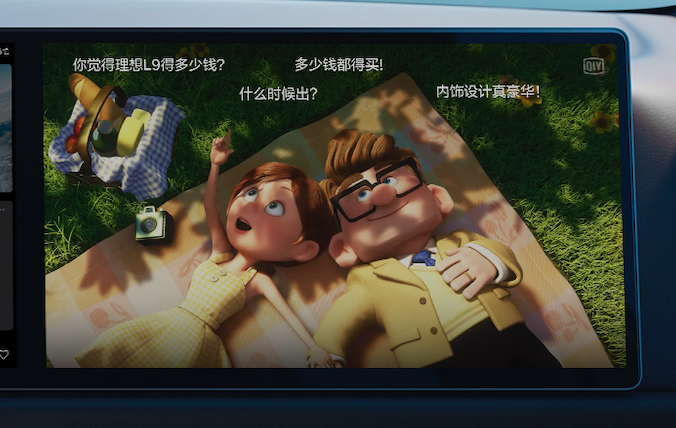
It should mainly focus on entertainment functionality.
Rear Screen
The layout of this screen is in line with many MPVs.
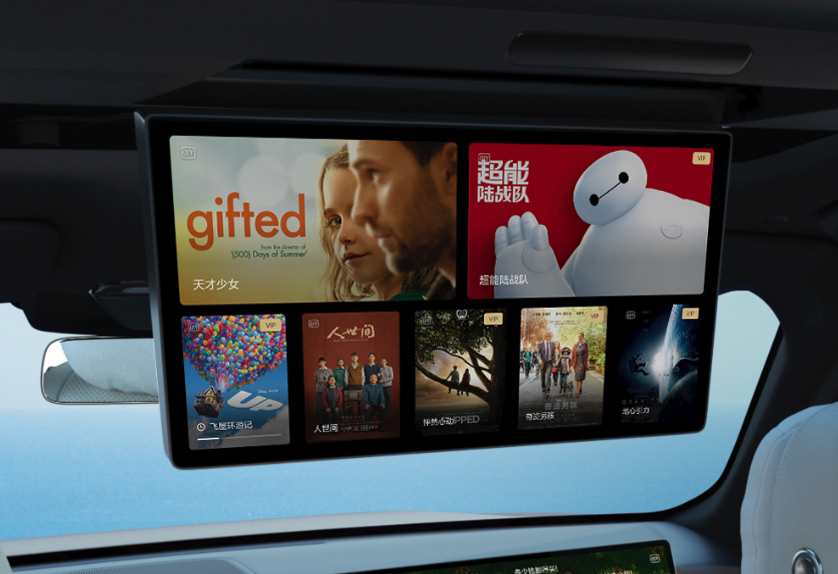 However, on the Ideal L9, this should be the largest and highest-quality screen, except for 4-seat MPVs.
However, on the Ideal L9, this should be the largest and highest-quality screen, except for 4-seat MPVs.
In my communication with many Ideal ONE car owners, I found that when they are with their children, their children love to watch cartoons in the car. Although the experience of the co-driver screen is generally not good, it is still very popular with the children. This time, Ideal has directly added another screen in the back, which should be very convenient.
After discussing these 5 screens, let’s take a look at other details in the comments section.
About the Front Row
- The gear lever has been cancelled, and it is expected to use a gesture-controlled gear shifting system. Two wireless charging pads have been added to the original gear shifter area.
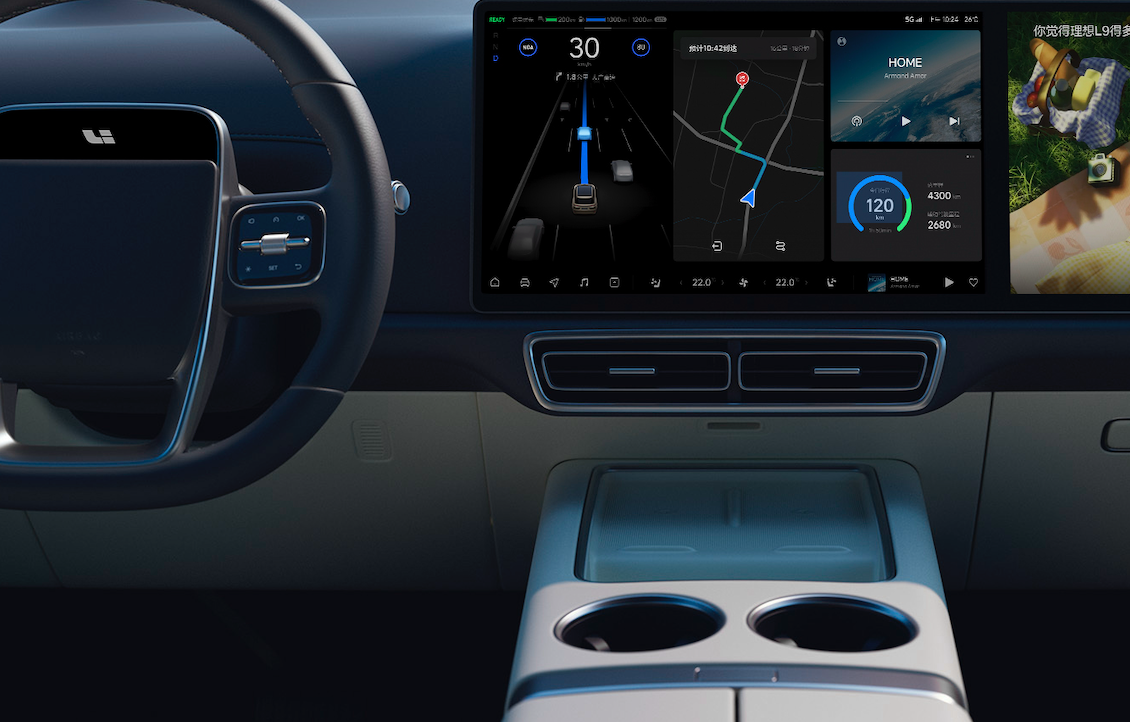
- There are speakers at the top of the A-pillar, and it is expected to use a 7.1.4-channel sound system, which is said to provide a very shocking audio experience.
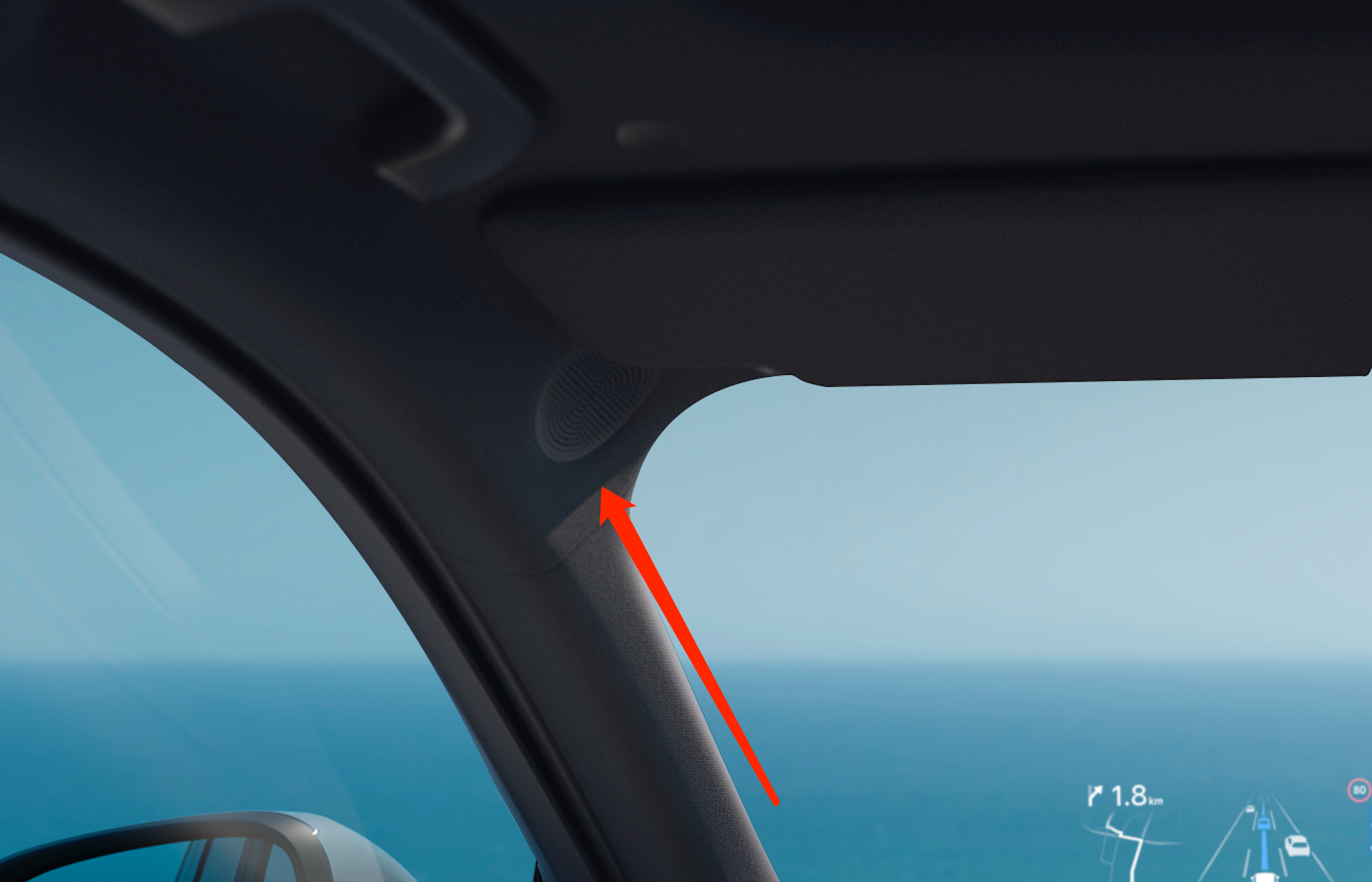
- The interior rearview mirror has a frameless design. We speculate that a streaming media rearview mirror may be used to avoid blocking the line of sight of the rear screen.
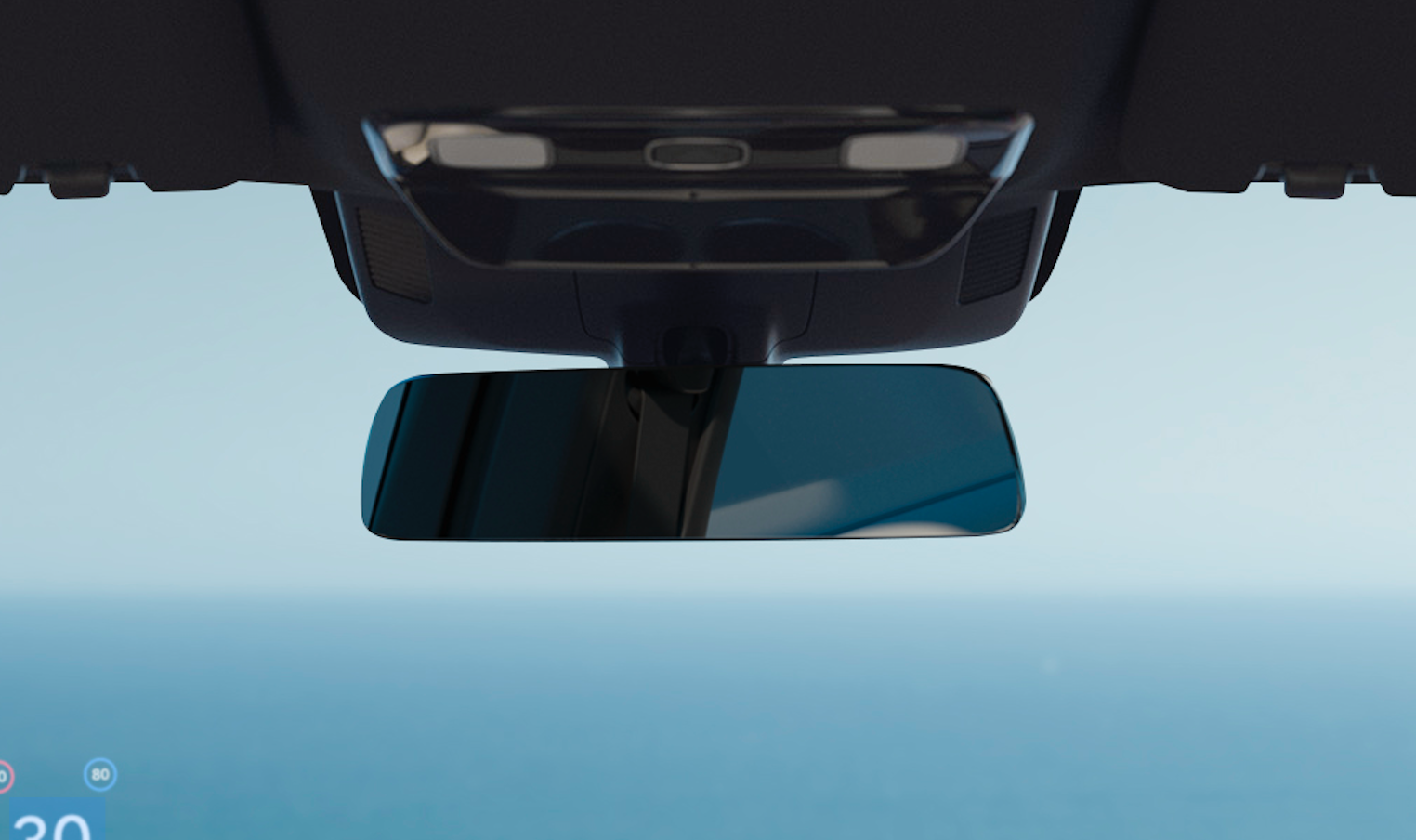
About the Rear Row
- The panoramic sunroof on the roof is very large, extending to the top of the third row. It is foreseeable that the third row will not have the oppressive feeling of other 6-seat cars on the market.
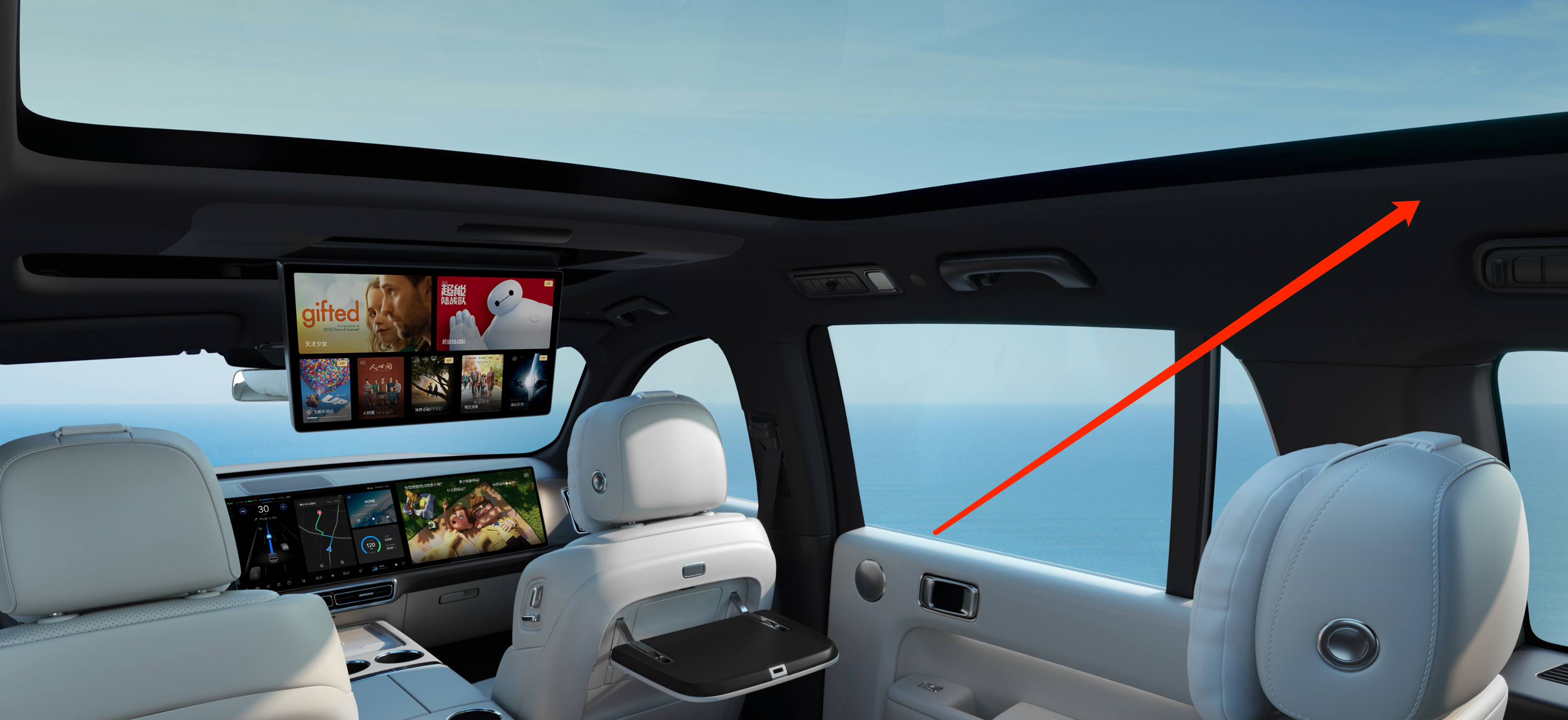
- Only the right rear seat has a small table.
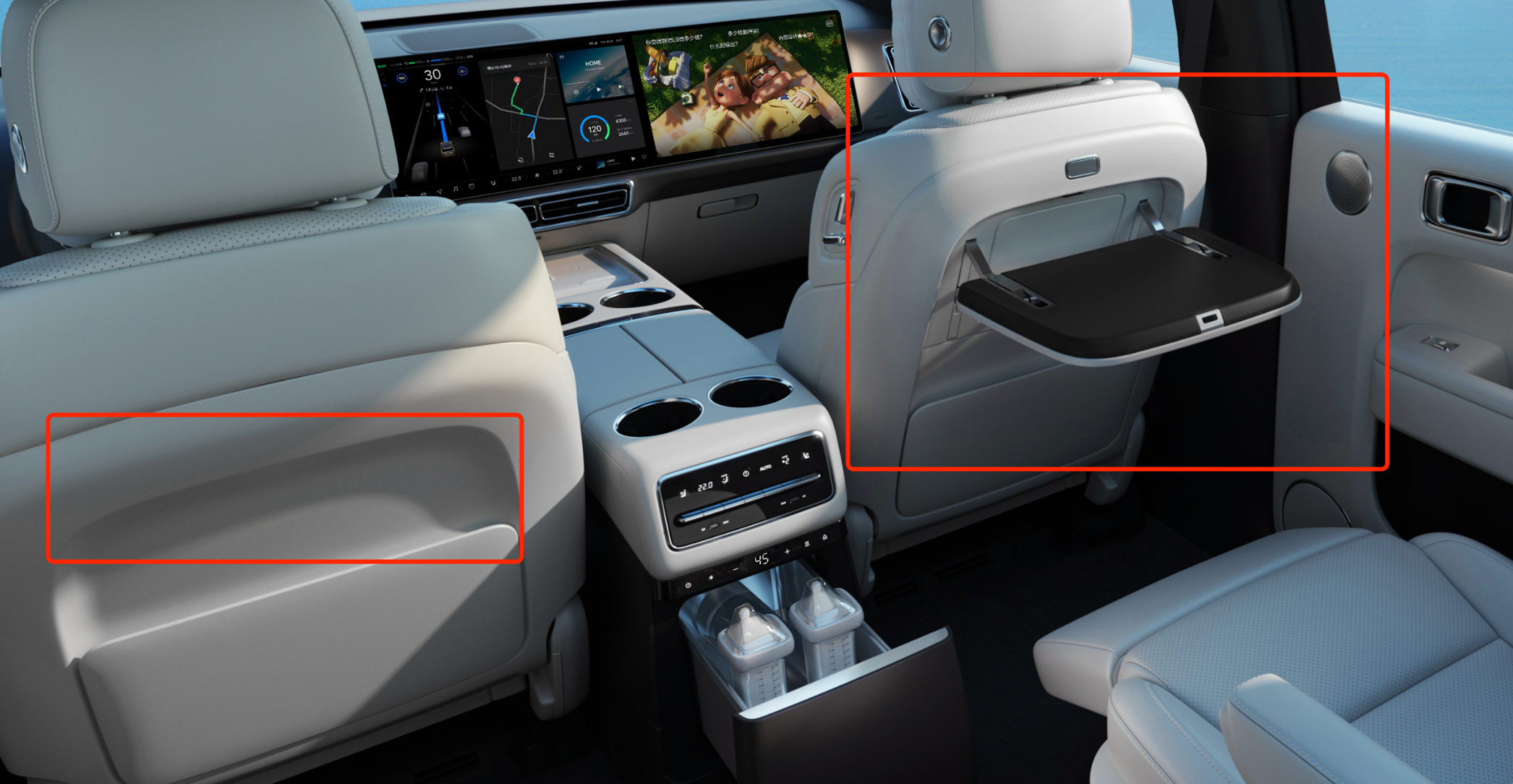
- The rear row has a boss button and a leg rest.
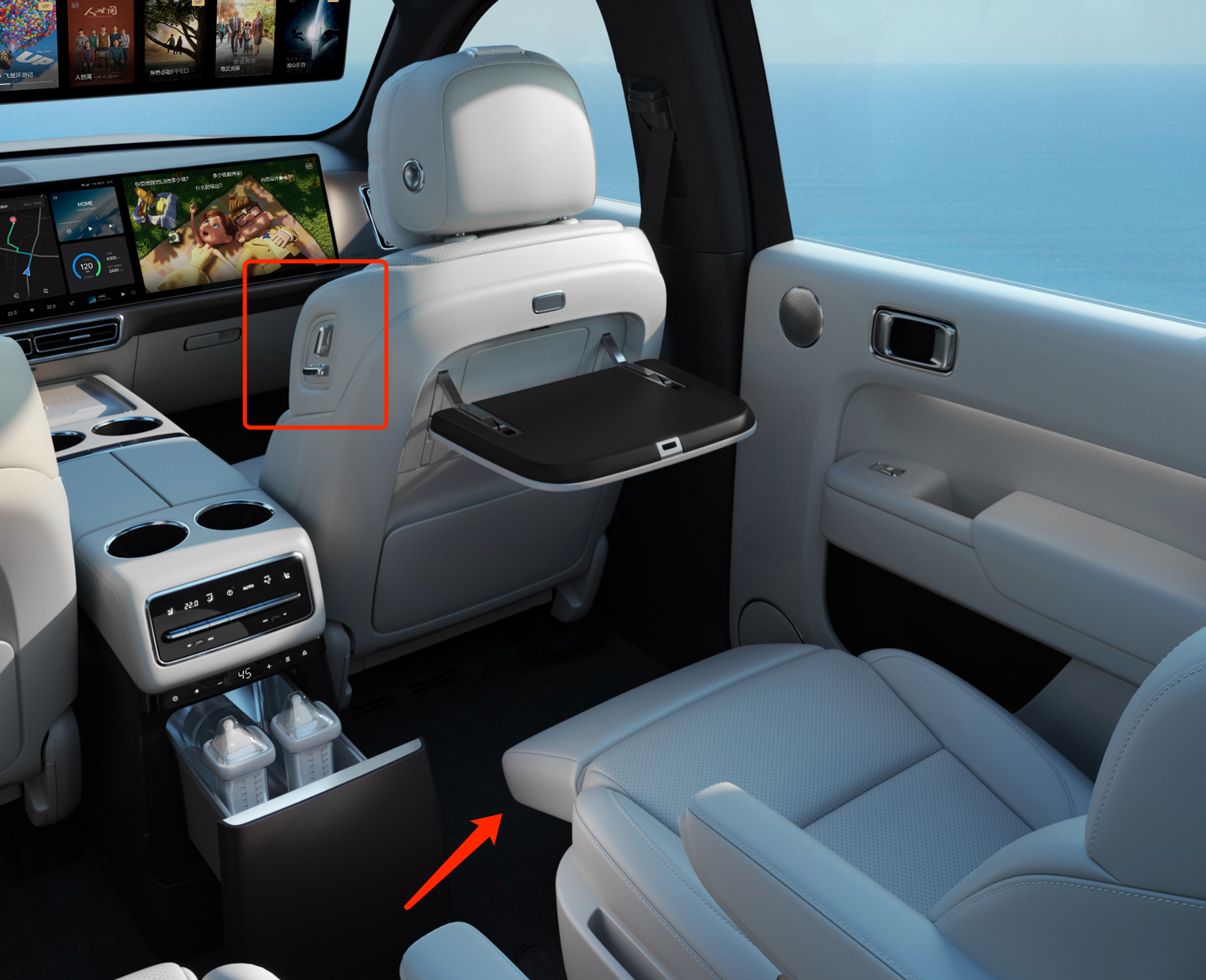
- The rear row has dual Type-C ports and supports VR device connection.
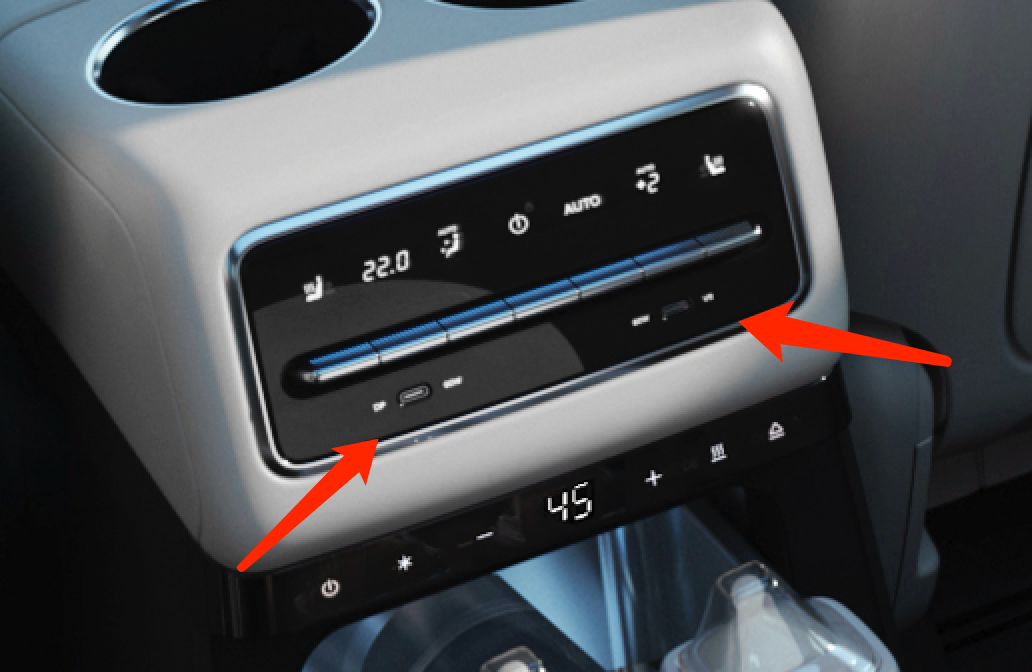
- There is a heated and refrigerated space under the central armrest, which can be used to refrigerate drinks or heat up a baby’s milk.
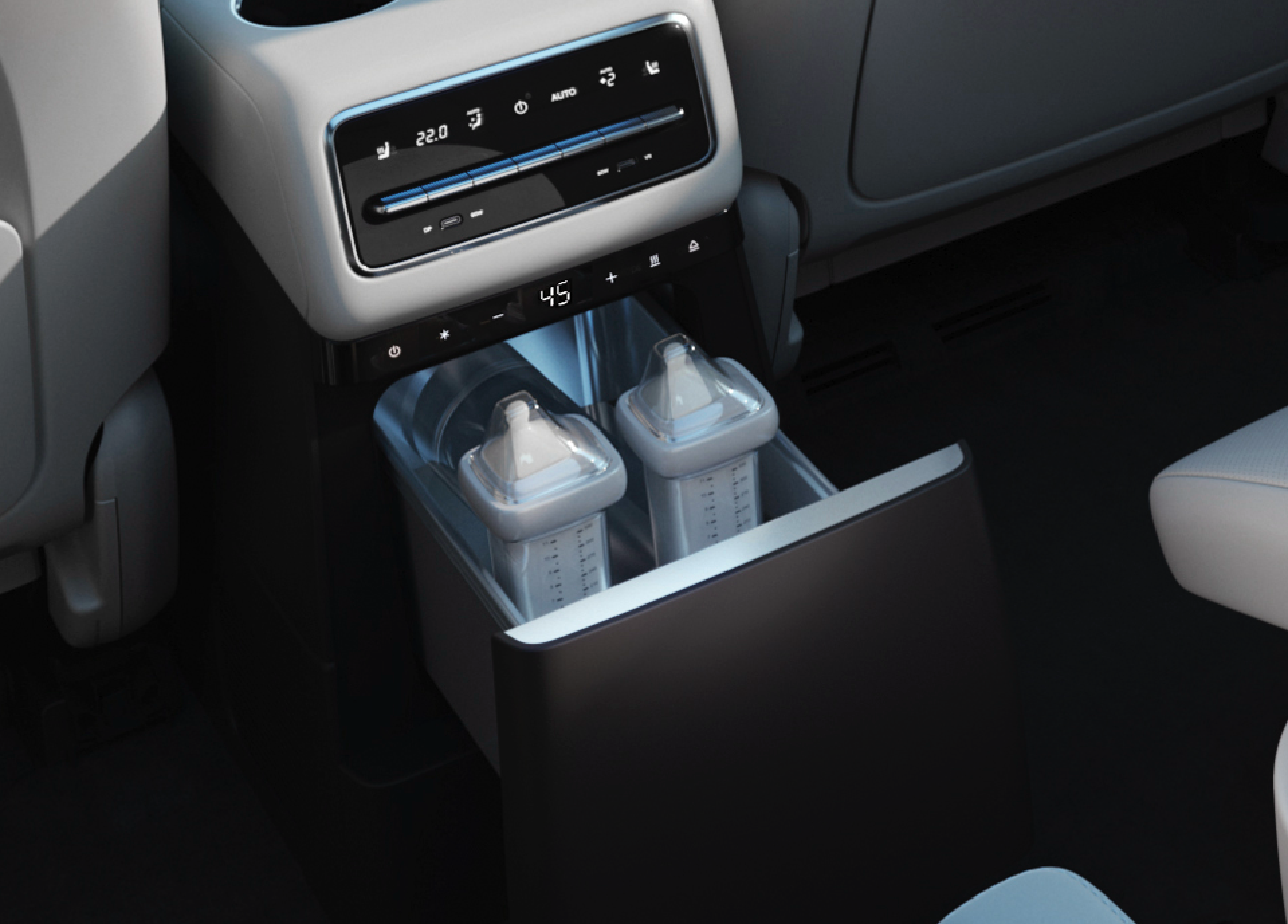 The above are all details we found from these two pictures, and welcome to supplement if there is any omission.
The above are all details we found from these two pictures, and welcome to supplement if there is any omission.
Finally, welcome to join our Ideanomics L9 Circle, where everyone has left memories and the latest news about Ideanomics L9. If you want to have more real-time communication, you can click the link to join our community.
This article is a translation by ChatGPT of a Chinese report from 42HOW. If you have any questions about it, please email bd@42how.com.
